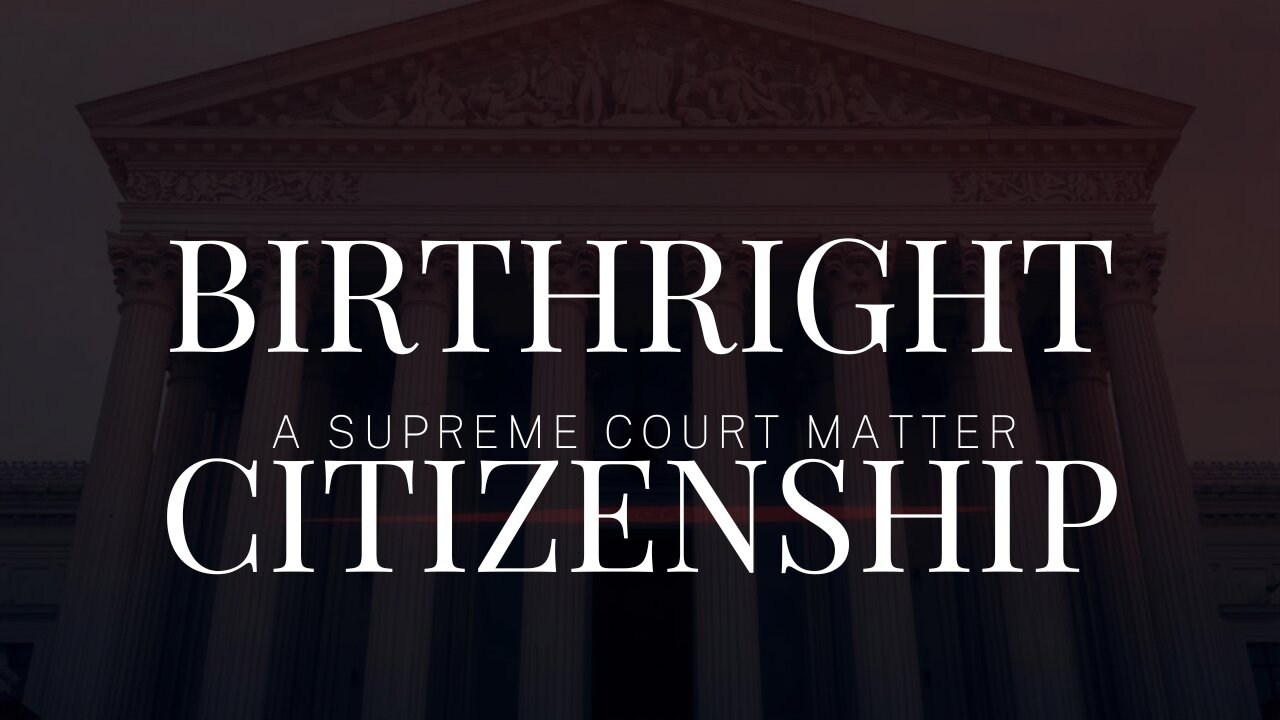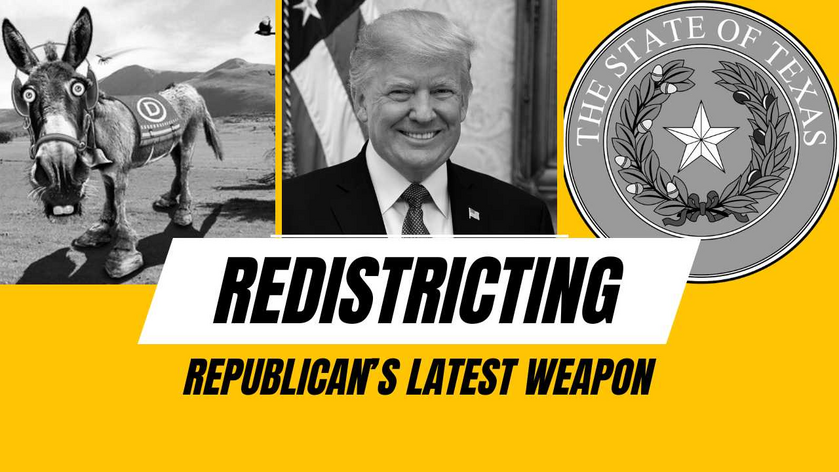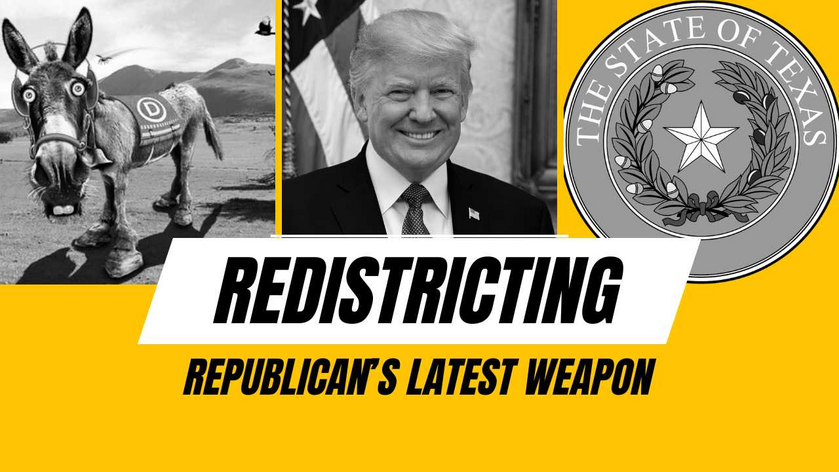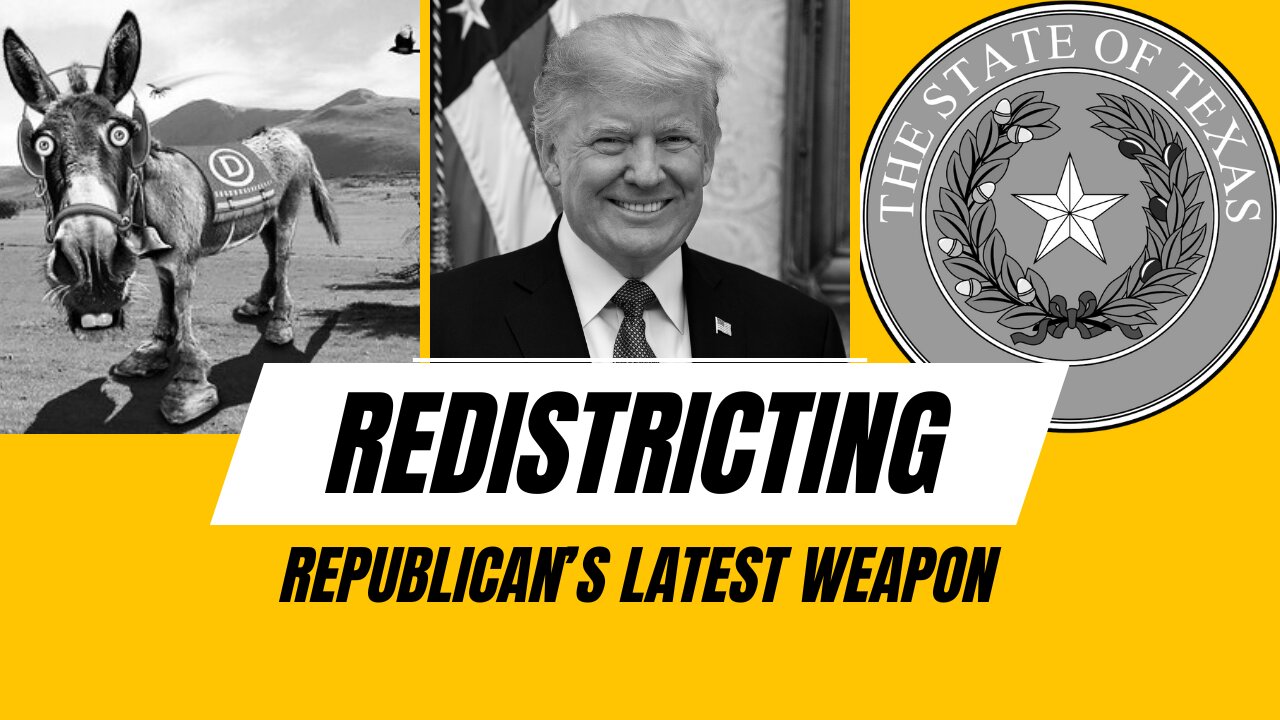Hampton Dellinger, “Special Counsel of the Office of Special Counsel,” desperately wants his job back. President Donald J. Trump fired him twelve days ago – for good and sufficient cause, even if he didn’t state it. Dellinger immediately sued to get his job back, and an Obama-appointed judge handed down an administrative stay. An appellate court denied relief from the stay, and the trial judge extended it. But now it has reached the Supreme Court, which has asked for – and received – response and friend-of-the-court briefs. This case will decide whether any agency, entirely of the government, falls outside the purview of the chief executive. Thus it is another strategic hill for the Deep State to defend.
Who is Hampton Dellinger?
President Joe Biden first nominated Hampton Dellinger to head the Justice Department’s Office of Legal Policy in June of 2021. The Washington Free Beacon smelled a rat even then. Hampton Dellinger worked with Biden’s son Hunter at a law firm that represented the Ukrainian natural gas firm Burisma Holdings. That information turned up on emails on Hunter Biden’s laptop, which he had left at a computer repair shop and never reclaimed.
From The Washington Free Beacon:
Emails from [Hunter] Biden’s laptop show Boies Schiller Flexner partner William Isaacson arranged a dinner at his home for members of the Crisis Management and Government Response team in March 2014. Isaacson wrote in one email that Biden, Dellinger, and several others had confirmed their attendance at the party. Biden asked in an email on March 17, 2014, to seven of his Boies Schiller Flexner colleagues, including Dellinger, whether the dinner party was still on for that night.
What was Hampton Dellinger doing at that party? No one seems to have asked. Also:
It is unclear whether Dellinger did any work on the Burisma account, but an archive of the Boies Schiller Flexner website shows him listed as an attorney with the 12-person Crisis Management and Government Response team as of June 2014. Dellinger left Boies Schiller Flexner last year to form his own private practice.
The Wayback Machine is the People’s Receipts File. That archive does indeed list Hampton Dellinger in that capacity.
On October 3, 2023, President Biden nominated Dellinger to head the Office of Special Counsel. Dellinger took that position on March 6, 2024. In June of 2024, President Biden was encouraging managers of projects that had funding from the 2021 Infrastructure Investment and Jobs Act to put up signs reading “Project Funded by President Joe Biden’s Bipartisan Infrastructure Bill.”
Noticing a lack of enthusiasm for Joe Biden’s reelection? Democrats have a fix for that: They’re using taxpayer money to put up Biden yard signs.
The Biden White House has unilaterally rebranded the Infrastructure Investment and Jobs Act as the “President Biden’s Bipartisan Infrastructure Bill” — literally, that’s what they’re calling it — and is mandating that all projects using taxpayer funds put up signs touting Biden’s role
Biden even hired the same firm behind his campaign logo and had them design the signs to look like they’re from his campaign.
All of this is flagrantly illegal under the Hatch Act, but that’s one of the plus sides of running a political DOJ: Charge your enemies with fake crimes while deciding the law doesn’t exist for your own side.
https://x.com/charliekirk11/status/1804282757025271954
Christina Laila of The Gateway Pundit wrote then that Sen. Ted Cruz (R-Texas) made a written inquiry into whether such requests violated the Hatch Act. (Ironically, much of her information came from Politico.) Sen. Cruz sent it to none other than Hampton Dellinger, in his capacity as head of OSC. And to the best of anyone’s knowledge, Dellinger made no attempt to investigate.
The firing, and the legal actions
At 7:22:59 p.m. EST on Friday, February 7, Dellinger received an email saying:
Good evening, Hampton: On behalf of President Donald J. Trump, I am writing to inform you that your position as Special Counsel of the US Office of Special Counsel is terminated, effective immediately. Thank you for your service. [Signed] Sergio [Gor, Assistant to the President, Director of Presidential Personnel Office, The White House.]
Next Monday, Dellinger sued in the U.S. District Court for the District of Columbia. Dellinger v. Bessent, 1:25-cv-00385, assigned to Judge Amy Berman Jackson. Before the day was out – indeed, before the Trump administration had a chance to respond – Judge Jackson handed down an administrative stay. By its terms, Dellinger got his job back – but the order called for more than his drawing a paycheck.
[F]rom the time of this order through midnight on February 13, 2025, plaintiff Hampton Dellinger shall continue to serve as the Special Counsel of the Office of Special Counsel, the position he occupied at 7:22 p.m. on Friday, February 7, 2025 when he received an email from the President, and the defendants may not deny him access to the resources or materials of that office or recognize the authority of any other person as Special Counsel.
The administration appealed at once, to the Court of Appeals for the District of Columbia Circuit. Hampton Dellinger v. Scott Bessent, 25-5025. The Court of Appeals assigned a bad-luck panel: Florence Pan, J. Michelle Childs, and Gregory Katsas. Judges Pan and Childs are Biden appointees; Judge Katsas is a Trump (I) appointee. The two Biden appointees voted to dismiss the matter for lack of subject-matter jurisdiction.
Appellants have not shown that the district court’s February 10, 2025 minute order, which entered a three-day administrative stay to afford time to consider appellee’s motion for a temporary restraining order, had the effect of granting an injunction that is appealable under 28 U.S.C. § 1292(a)(1).
The paragraph cited, reads in relevant part:
Except as provided in subsections (c) and (d) of this section, the courts of appeals shall have jurisdiction of appeals from interlocutory orders of the district courts of the United States, the United States District Court for the District of the Canal Zone, the District Court of Guam, and the District Court of the Virgin Islands, or of the judges thereof, granting, continuing, modifying, refusing or dissolving injunctions, or refusing to dissolve or modify injunctions, except where a direct review may be had in the Supreme Court.
Judge Katsas, writing separately, felt he had to agree, because the administrative stay was for a mere three days. But he warned then that Dellinger would have a tough time justifying a temporary restraining order (TRO), for which he had moved at District Court level.
Dellinger wins a TRO
Nevertheless, on Wednesday, Judge Jackson did issue the TRO. In her twenty-seven-page order, she relied on the statute creating the Office of Special Counsel (5 U.S.C. § 1211). Paragraph b of this section states:
The Special Counsel shall be appointed by the President, by and with the advice and consent of the Senate, for a term of 5 years. The Special Counsel may continue to serve beyond the expiration of the term until a successor is appointed and has qualified, except that the Special Counsel may not continue to serve for more than one year after the date on which the term of the Special Counsel would otherwise expire under this subsection. The Special Counsel shall be an attorney who, by demonstrated ability, background, training, or experience, is especially qualified to carry out the functions of the position. A Special Counsel appointed to fill a vacancy occurring before the end of a term of office of the Special Counsel’s predecessor serves for the remainder of the term. The Special Counsel may be removed by the President only for inefficiency, neglect of duty, or malfeasance in office. The Special Counsel may not hold another office or position in the Government of the United States, except as otherwise provided by law or at the direction of the President.
More to the point, she recognized the concept independent agency as a valid concept under the Constitution. To do this, she relied on the case of Humphrey’s Executor v. United States, 295 U.S. 602, 631-2 (1935). That case dealt with another “independent agency,” the Federal Trade Commission. When President Franklin D. Roosevelt tried to replace five of its members, the Supreme Court said he may not. The reason: the FTC has some executive and some legislative and judicial powers.
The administration went back to the D.C. Circuit Court of Appeals. Hampton Dellinger v. Scott Bessent, 25-5028. The same panel heard this fresh appeal, and again dismissed it for lack of subject-matter jurisdiction! This time the appellate court held that even TROs are not appealable. They emphasized the time limit on the TRO. So perhaps they meant to say, “Come back when you have a preliminary injunction to appeal.” But in their order, they copied most of Judge Jackson’s reasoning about independent agencies and protections of tenure of office.
Judge Katsas’ dissent – and Supreme Court action
This time, Judge Katsas flat-out dissented from the panel’s conclusion.
The President removed Hampton Dellinger from his position as Special Counsel, the sole head of a federal agency that wields executive power in prosecuting enforcement actions before the Merit Systems Protection Board. The district court then ordered the President to recognize Dellinger as the agency head for two weeks. Despite the limited duration of that order, I would stay it immediately. As explained below, the President is immune from injunctions directing the performance of his official duties, and Article II of the Constitution grants him the power to remove agency heads.
Katsas held that Hampton Dellinger held the office of a prosecutor before another agency, the Merit Systems Protection Board. Prosecutors are strictly executive officers. They neither make nor interpret law; they simply execute it. As to the jurisdiction of the court, Judge Katsas saw that the TRO, like the earlier administrative stay, requires President Trump to retain Dellinger in office, will full access to computer systems, records, and the like. Had the TRO allowed the President to put Dellinger on paid administrative leave, it would not have been appealable.
Katsas also distinguished Humphrey’s Executor. He pointed out that Dellinger was a singular agency head, not a member of a panel having joint headship.
The administration, over the weekend, filed an application to vacate the TRO, and for an immediate administrative stay. Bessent v. Dellinger, 24A790. Chief Justice John Roberts docketed the application yesterday (February 18) and ordered Dellinger to respond in writing by today. Dellinger responded at once – and furthermore, three “friends of the court” briefed the matter yesterday. This morning, Treasury Secretary Scott Bessent has replied, and twenty States also filed a friend-of-the-court brief.
Finally, President Trump yesterday signed a new Executive Order clearly rejecting the concept “independent agency” as Judge Jackson construes it. He has asserted his absolute control over every agency not part of Congress or the courts. With these exceptions:
This order shall not apply to the Board of Governors of the Federal Reserve System or to the Federal Open Market Committee in its conduct of monetary policy. This order shall apply to the Board of Governors of the Federal Reserve System only in connection with its conduct and authorities directly related to its supervision and regulation of financial institutions.
In other words, he is challenging Humphrey’s Executor on its face.
Summary of arguments
The administration, and friends-of-the-court New Civil Liberties Alliance and Florida and 19 other States, stand on Article II.
The executive power shall be vested in a President of the United States of America.
More particularly, the government relies on previous precedents holding that Presidents may remove sole heads of agencies wielding executive power. The TRO that Dellinger obtained is especially weak because it orders the President to keep him on the job. What’s more, Trump may not appoint anyone else to do that job. In short, a District Court is telling a President how to do his job.
The Florida brief goes further: it asks the Court to overrule the Humphrey case and allow no exceptions to a President’s absolute authority to remove agency heads, or even members of multi-member panels having joint agency headship, who displease him, or for any other reason, or no reason.
Dellinger relies on the time limit of the TRO and painstakingly distinguishes a TRO from an injunction (preliminary or permanent). But he also discusses at length the history of the Office of Special Counsel as an independent agency. Meaning it is independent of the President and should so remain.
The Law Professors concern themselves strictly with whether anything the Supreme Court does, would jeopardize the independence of the Federal Reserve as an independent central bank. But Trump carved out an exception to his Executive Order covering the Federal Reserve. So that should not apply.
Finally, the Former Public Officials (all former agency heads or multi-member panel members) want to protect Dellinger’s tenure-of-office privilege.
Analysis
As the Florida brief makes clear, the very notion of an independent agency violates the Constitution. The proper remedy against any President who has abused the executive power is:
removal from office on impeachment for, and conviction of, treason, bribery, and other high crimes and misdemeanors.
Humphrey’s Executor set a precedent that almost replicated the Tenure of Office Act of 1867. Eventually that act lapsed, but the Supreme Court has since held – three times – that Presidents can fire whom they please. Myers v. United States, 272 U.S. 52 (1926), Seila Law LLC v. Consumer Financial Protection Bureau, 591 U.S. 197 (2020), and Collins v. Yellen, 594 U.S. 220 (2021). Indeed those three cases show up repeatedly in the briefs. The government relies on them, and Dellinger takes extraordinary pains to distinguish them.
Dellinger is, quite simply, out of luck. As the sole head of an agency with prosecutorial but not rule-making or interpretive authority, he cannot even rely on Humphrey’s Executor. The Supreme Court could grant the vacatur on that basis alone. But the Florida brief, again, goes further, and says that Humphrey’s Executor was erroneous and merits immediate correction.
Dellinger obviously appeals to the Institutionalists’ concern for the welfare and prerogatives of the national judiciary. “This Court will see a flood of applications for vacatur!” he cries – thus admitting that several courts have granted TROs just as wrongheaded as his. Not so fast, says the government. This TRO is different from most. And, after vacating this TRO, the Court could vacate others by direct reference to its opinion on this application.
Stay tuned. This could get interesting.
Link to:
The article:
https://cnav.news/2025/02/19/news/dellinger-executive-power/
Video:
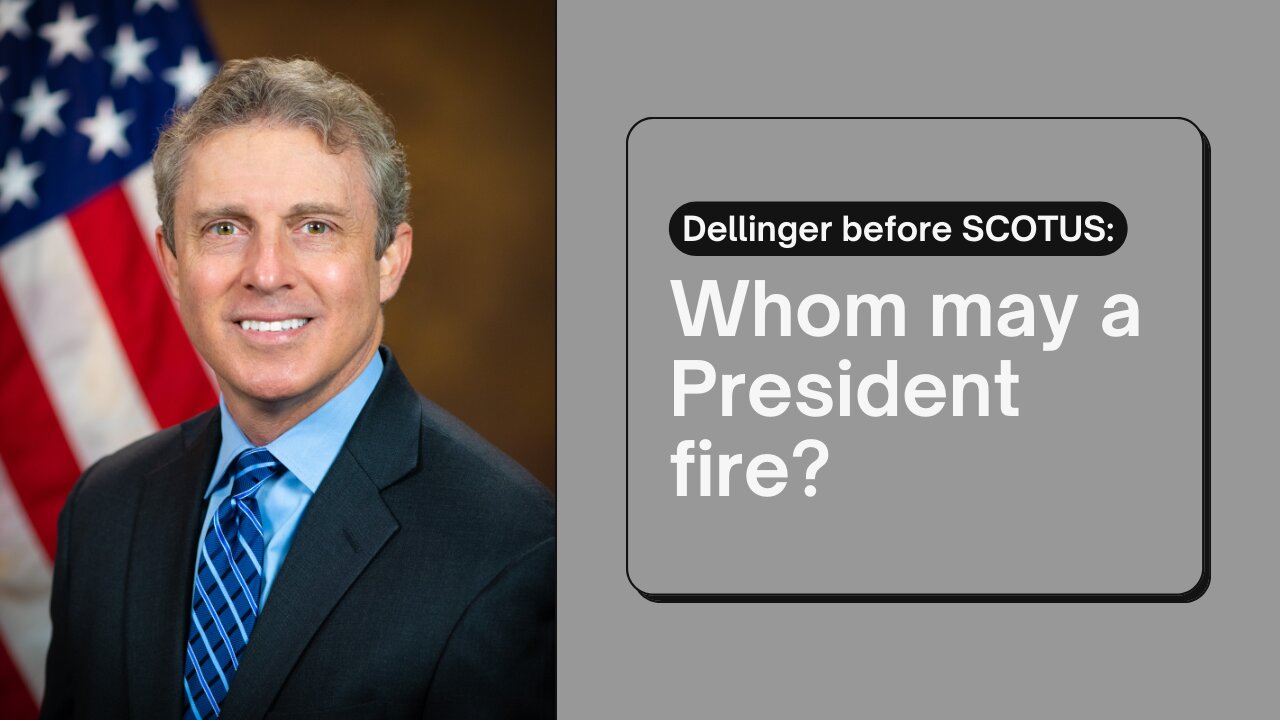
Dellinger’s association with Burisma’s law firm:
Charlie Kirk on the yard-sign controversy:
https://x.com/charliekirk11/status/1804282757025271954
Court dockets and other documents:
District Court:
https://www.courtlistener.com/docket/69624836/dellinger-v-bessent/
https://storage.courtlistener.com/recap/gov.uscourts.dcd.277297/gov.uscourts.dcd.277297.14.0_5.pdf
Court of Appeals:
https://www.courtlistener.com/docket/69628289/hampton-dellinger-v-scott-bessent/
https://www.courtlistener.com/docket/69636261/hampton-dellinger-v-scott-bessent/
Supreme Court:
Docket:
https://www.supremecourt.gov/search.aspx?filename=/docket/docketfiles/html/public/24a790.html
Application:
Response:
Reply:
https://www.supremecourt.gov/DocketPDF/24/24A790/343108/20250219093542259_24A790%20Reply.pdf
Friend-of-the-court Briefs:
Law Professors:
https://www.supremecourt.gov/DocketPDF/24/24A790/343033/20250218144147911_No.%2024A790_Amicus%20Brief.pdf
Former Public Officials:
https://www.supremecourt.gov/DocketPDF/24/24A790/343074/20250218164919694_24-790_Amici%20Brief.pdf
New Civil Liberties Alliance:
Florida and 19 Other States:
Title 28 U.S.C. Section 1292:
https://www.law.cornell.edu/uscode/text/28/1292
https://www.law.cornell.edu/uscode/text/5/1211
Humphrey’s Executor v. United States, 295 U.S. 602, 631-2 (1935):
https://supreme.justia.com/cases/federal/us/295/602/
Trump’s Executive Order asserting unitary executive power:
https://www.whitehouse.gov/presidential-actions/2025/02/ensuring-accountability-for-all-agencies/
Tenure of Office Act of 1867:
https://avalon.law.yale.edu/19th_century/john_chap_05.asp
Myers v. United States:
https://www.law.cornell.edu/supremecourt/text/272/52
Seila Law LLC v. Consumer Financial Protection Bureau:
https://supreme.justia.com/cases/federal/us/591/19-7/
Collins v. Yellen:
https://supreme.justia.com/cases/federal/us/594/19-422/
Declarations of Truth:
Declarations of Truth Locals Community:
https://declarationsoftruth.locals.com/
Conservative News and Views:
Clixnet Media





